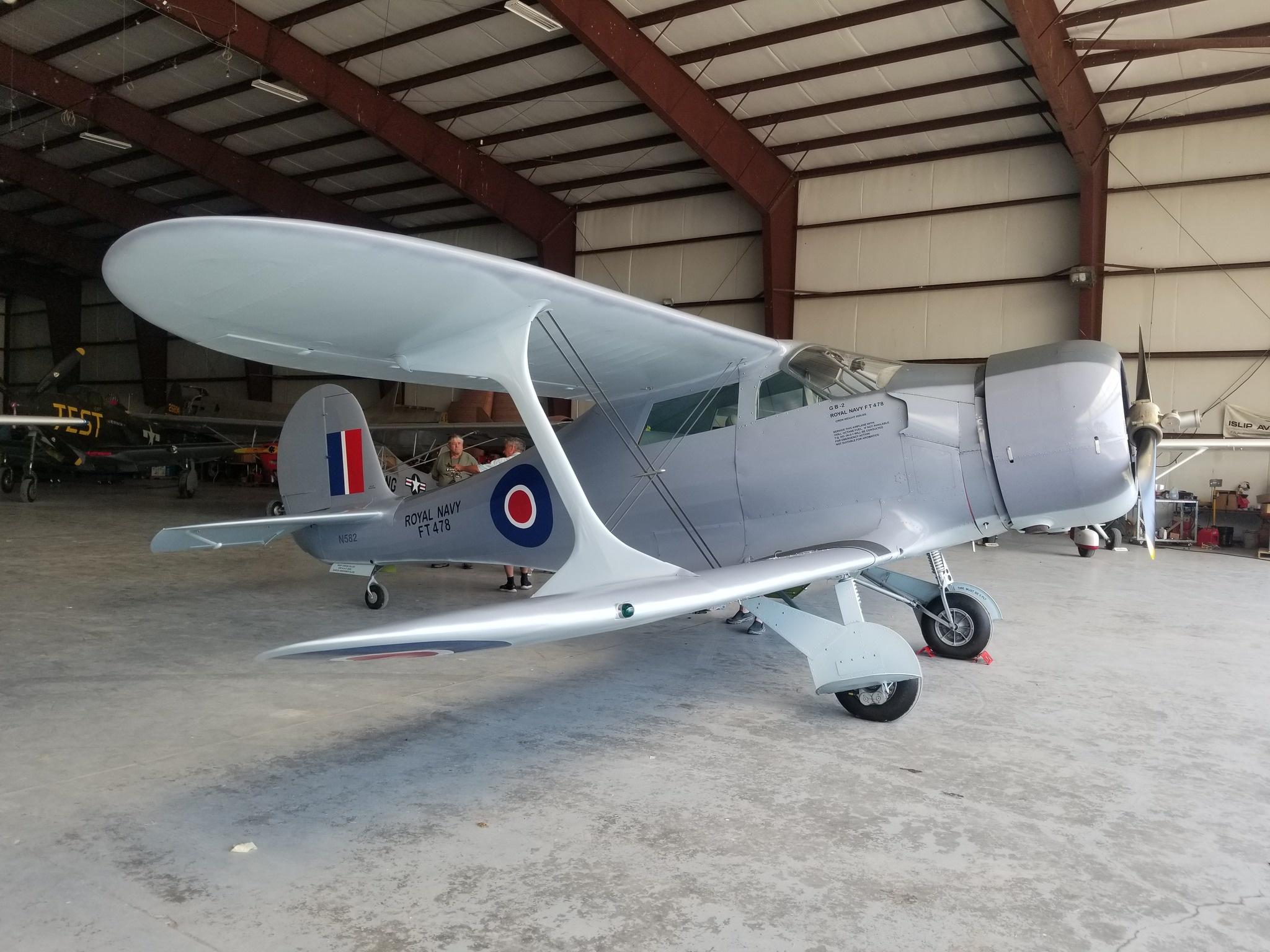
GB-2
GB-2 Traveler Mk. I
"Staggerwing"

"Staggerwing"
National Warplane Museum
The Beechcraft Staggerwing is one of the most distinctive and elegant aircraft designs of the 1930s and 1940s. Known for its unique backward-staggered biplane wings, fully retractable landing gear, and sleek streamlined fuselage, the Staggerwing combined luxury with high performance, making it highly sought after in both civilian and military roles.
Introduced in the 1930s as a high-end executive transport, the Staggerwing quickly gained attention for its speed, comfort, and advanced design features. With the outbreak of World War II, the U.S. military designated the type as the GB-2, while the British acquired 107 examples under Lend-Lease, designating them Traveler Mk I (anglicized as "Traveller"). The aircraft was used primarily for VIP transport, staff duties, and long-range communications flights, providing both the U.S. and British forces with a fast and comfortable liaison platform during wartime operations.
The Traveler Mk I served with both the Royal Air Force and the Royal Navy’s Fleet Air Arm, flying communications and transport missions across multiple theaters. Notably, thirty Travellers were scheduled to be shipped from New York to Suez, Egypt in 1943; however, twelve were lost at sea when the Augumonte was torpedoed by a German U-boat. Surviving airframes like this one played an important role in keeping command and coordination networks functioning across widely dispersed Allied operations.
Beechcraft GB-2 Traveler Mk I (Military No. FT478 / Manufacturer’s No. 6704 / N# NC582)
Built in 1944, this Traveler Mk I was sent to Britain under the Lend-Lease agreement and assigned to the Royal Navy Fleet Air Arm as FT478. After serving during the war — including wearing British colors during operations on D-Day — the aircraft was returned to the U.S. and sold into civilian ownership. After several private owners, it was purchased in 1994 by Granger Haugh in California, who generously donated the aircraft to the National Warplane Museum in 2007.
Following its initial donation, the Staggerwing underwent a complete restoration to airworthy condition. In 2024, the fully restored aircraft was re-donated to the Museum, now proudly flying in its original Royal Navy Fleet Air Arm livery — the same colors it wore during its wartime service on D-Day while flying from Heston Airfield. Today, it serves not only as a rare operational example of the Staggerwing design but as a living tribute to the unique roles these elegant aircraft played in WWII.
WWII RNAF Transport/Liaison
Donated by Granger Haugh
Method: Donated
Hangar #1
Other aircrafts in our collection


